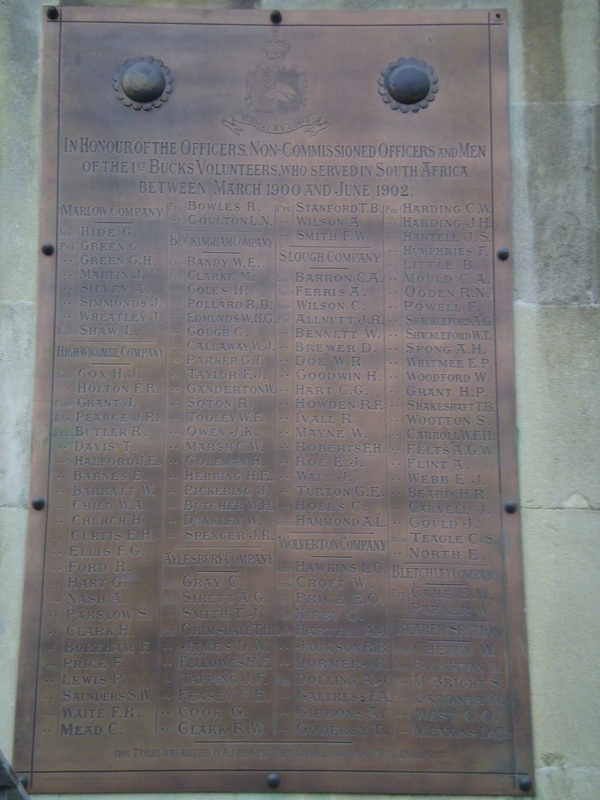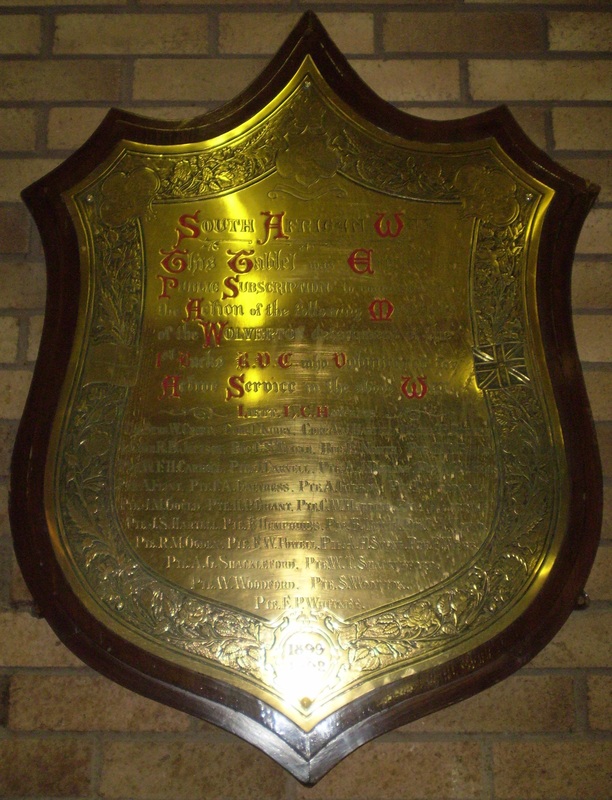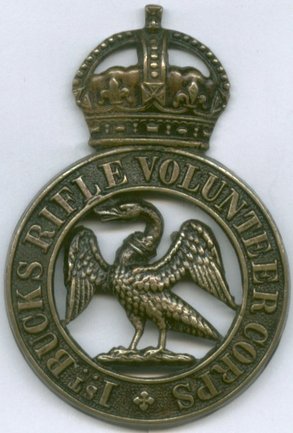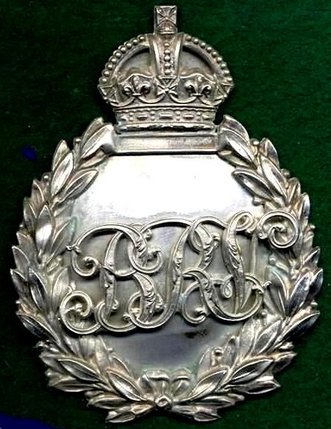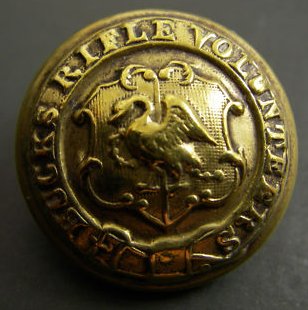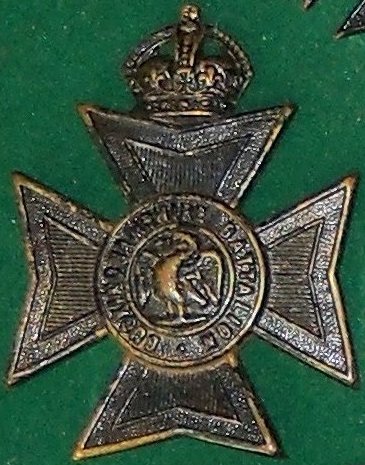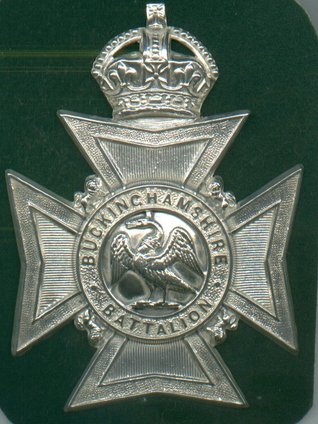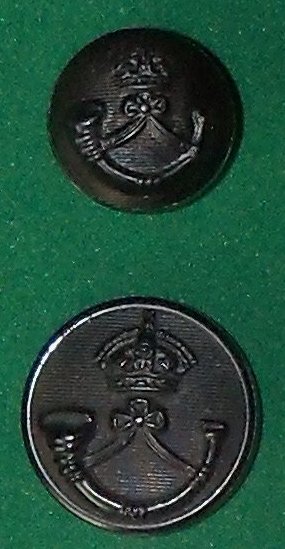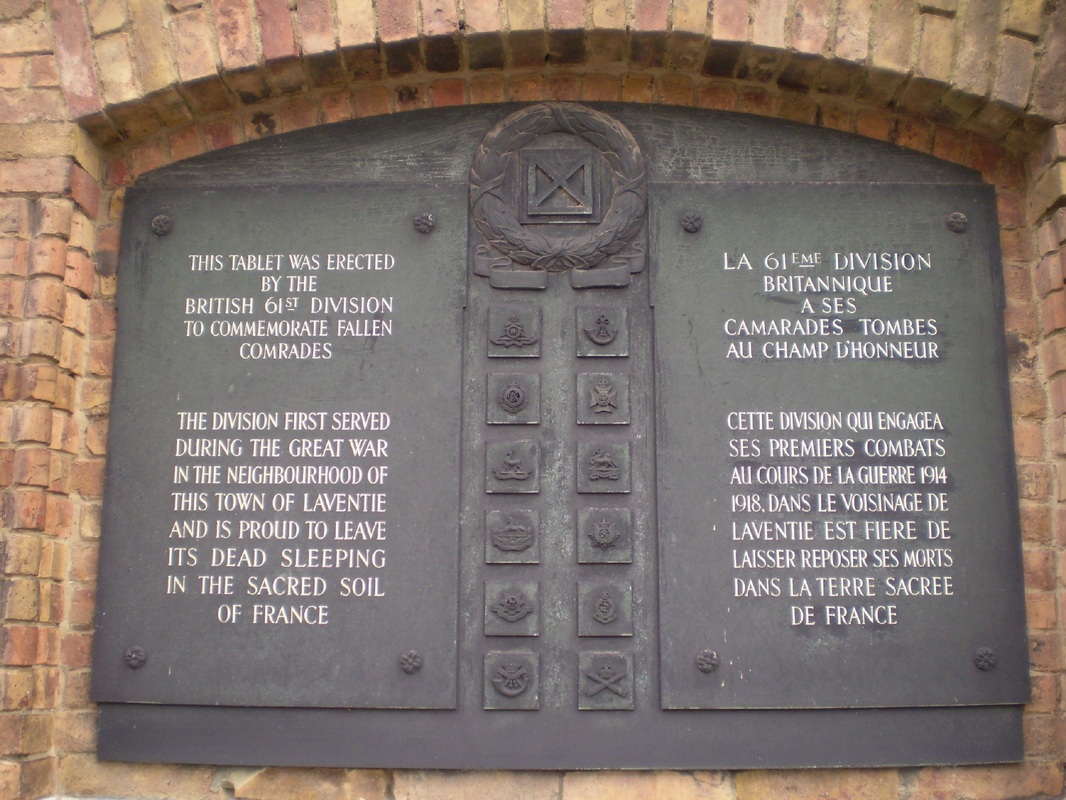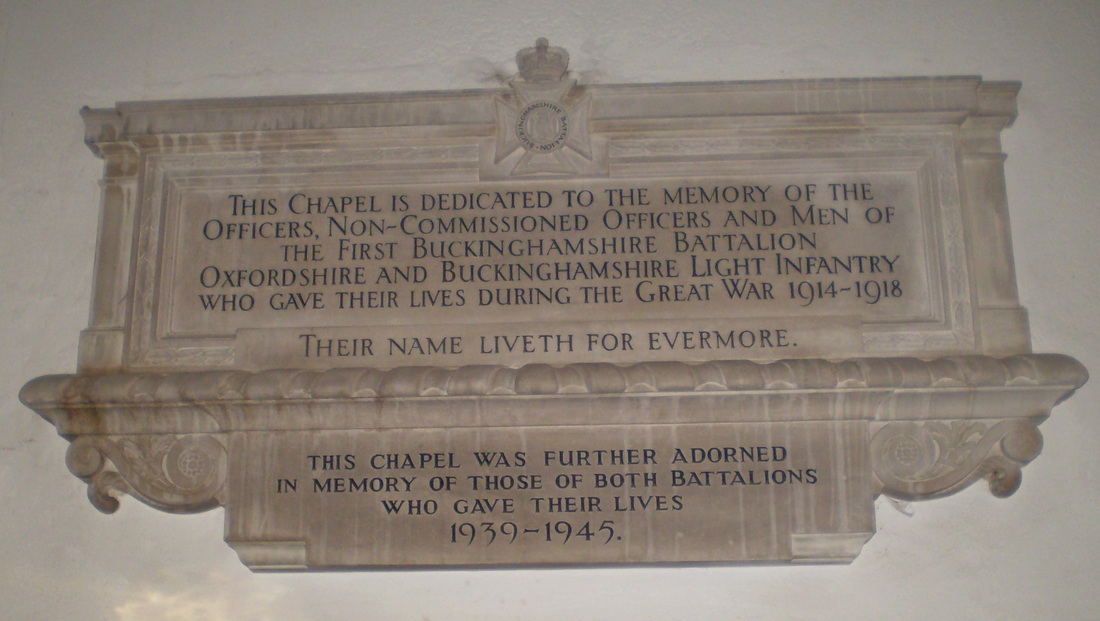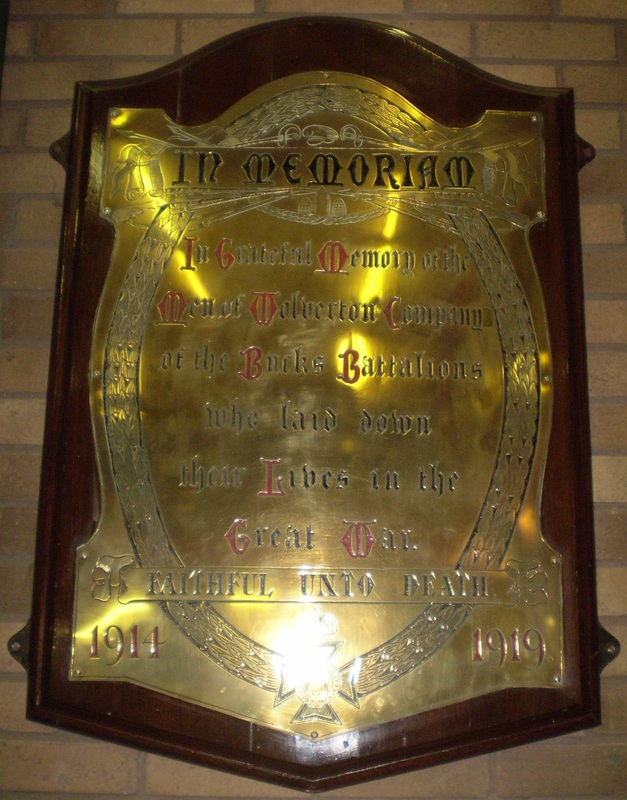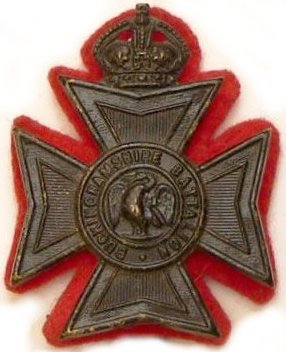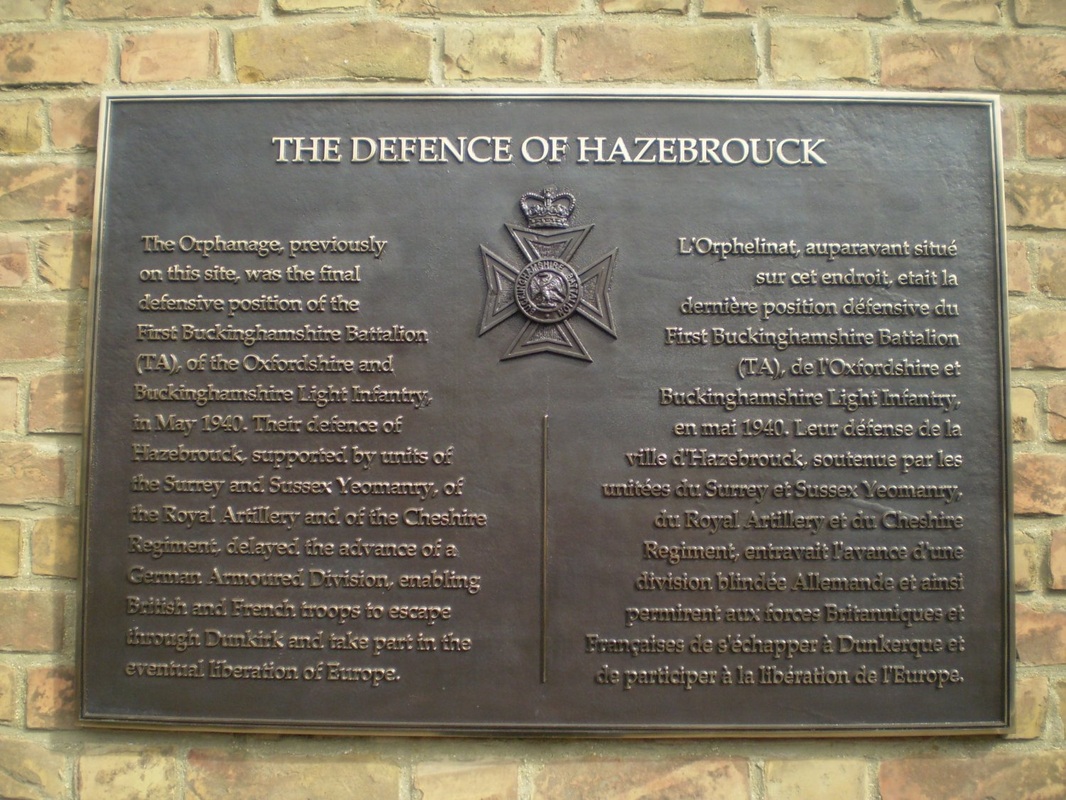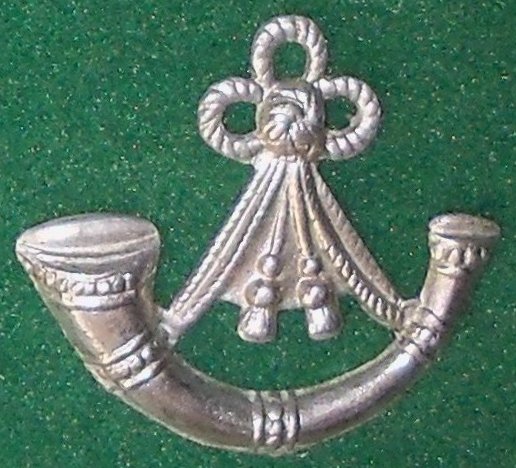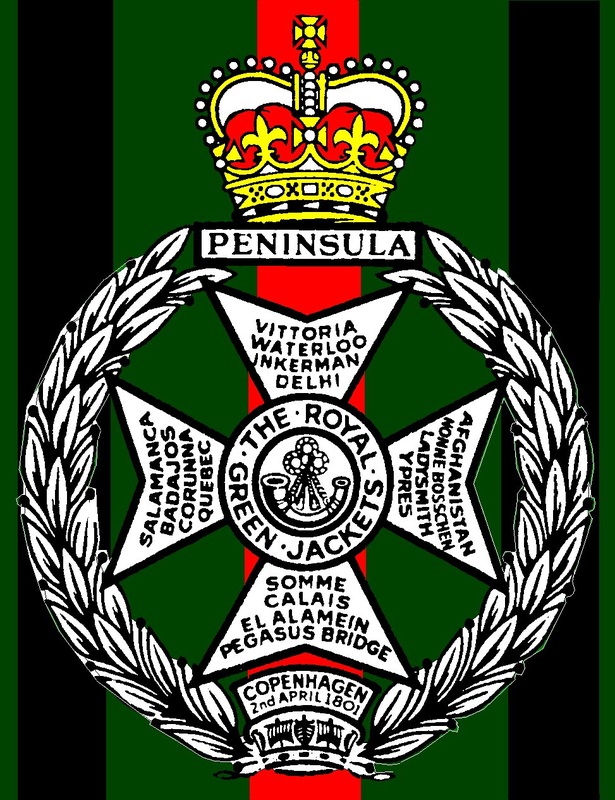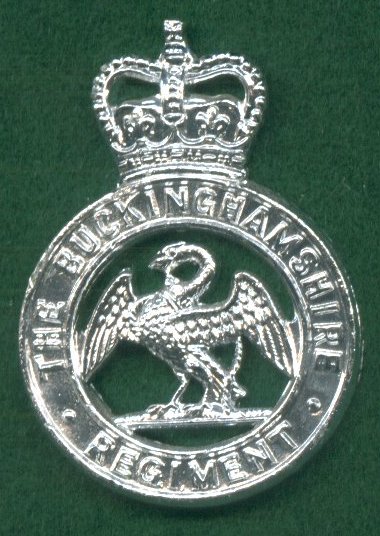- HOME
- SOLDIER RESEARCH
- WOLVERTONS AMATEUR MILITARY TRADITION
- BUCKINGHAMSHIRE RIFLE VOLUNTEERS 1859-1908
- BUCKINGHAMSHIRE BATTALION 1908-1947
- The Bucks Battalion A Brief History
- REGIMENTAL MARCH
-
1ST BUCKS 1914-1919
>
- 1914-15 1/1ST BUCKS MOBILISATION
- 1915 1/1ST BUCKS PLOEGSTEERT
- 1915-16 1/1st BUCKS HEBUTERNE
- 1916 1/1ST BUCKS SOMME JULY 1916
- 1916 1/1st BUCKS POZIERES WAR DIARY 17-25 JULY
- 1916 1/1ST BUCKS SOMME AUGUST 1916
- 1916 1/1ST BUCKS LE SARS TO CAPPY
- 1917 1/1ST BUCKS THE GERMAN RETIREMENT
- 1917 1/1st BUCKS TOMBOIS FARM
- 1917 1/1ST BUCKS THE HINDENBURG LINE
- 1917 1/1ST BUCKS 3RD BATTLE OF YPRES
- 1917 1/1st BUCKS 3RD YPRES 16th AUGUST
- 1917 1/1st BUCKS 3RD YPRES WAR DIARY 15-17 JULY
- 1917 1/1ST BUCKS 3RD BATTLE OF YPRES - VIMY
- 1917-18 1/1ST BUCKS ITALY
-
2ND BUCKS 1914-1918
>
- 1914-1916 2ND BUCKS FORMATION & TRAINING
- 1916 2/1st BUCKS ARRIVAL IN FRANCE
- 1916 2/1st BUCKS FROMELLES
- 1916 2/1st BUCKS REORGANISATION
- 1916-1917 2/1st BUCKS THE SOMME
- 1917 2/1st BUCKS THE GERMAN RETIREMENT
- 1917 2/1st BUCKS ST QUENTIN APRIL TO AUGUST 1917
- 1917 2/1st BUCKS 3RD YPRES
- 1917 2/1st BUCKS ARRAS & CAMBRAI
- 1918 2/1st BUCKS ST QUENTIN TO DISBANDMENT
-
1ST BUCKS 1939-1945
>
- 1939-1940 1BUCKS MOBILISATION & NEWBURY
- 1940 1BUCKS FRANCE & BELGIUM
- 1940 1BUCKS HAZEBROUCK
- HAZEBROUCK BATTLEFIELD VISIT
- 1940-1942 1BUCKS
- 1943-1944 1BUCKS PREPARING FOR D DAY
- COMPOSITION & ROLE OF BEACH GROUP
- BROAD OUTLINE OF OPERATION OVERLORD
- 1944 1ST BUCKS NORMANDY D DAY
- 1944 1BUCKS 1944 NORMANDY TO BRUSSELS (LOC)
- Sword Beach Gallery
- 1945 1BUCKS 1945 FEBRUARY-JUNE T FORCE 1st (CDN) ARMY
- 1945 1BUCKS 1945 FEBRUARY-JUNE T FORCE 2ND BRITISH ARMY
- 1945 1BUCKS JUNE 1945 TO AUGUST 1946
- BUCKS BATTALION BADGES
- BUCKS BATTALION SHOULDER TITLES 1908-1946
- 1939-1945 BUCKS BATTALION DRESS >
- ROYAL BUCKS KINGS OWN MILITIA
- BUCKINGHAMSHIRE'S LINE REGIMENTS
- ROYAL GREEN JACKETS
- OXFORDSHIRE & BUCKINGHAMSHIRE LIGHT INFANTRY 1741-1965
- OXF & BUCKS LI INSIGNIA >
- REGIMENTAL CUSTOMS & TRADITIONS >
- REGIMENTAL COLLECT AND PRAYER
- OXF & BUCKS LI REGIMENTAL MARCHES
- REGIMENTAL DRILL >
-
REGIMENTAL DRESS
>
- REGIMENTAL UNIFORM 1741-1896
- REGIMENTAL UNIFORM 1741-1914
- 1894 REGIMENTAL DRESS
- 1897 OFFICERS DRESS REGULATIONS
- 1900 DRESS REGULATIONS
- 1931 REGIMENTAL DRESS
- 1939-1945 REGIMENTAL DRESS
- 1950 OFFICERS DRESS REGULATIONS
- 1960 OFFICERS DRESS REGULATIONS (TA)
- 1960 REGIMENTAL MESS DRESS
- 1963 REGIMENTAL DRESS
- 1958-1969 REGIMENTAL DRESS
- HEADDRESS >
- REGIMENTAL CREST
- BATTLE HONOURS
- REGIMENTAL COLOURS >
- BRIEF HISTORY
- REGIMENTAL CHAPEL, OXFORD >
-
THE GREAT WAR 1914-1918
>
- REGIMENTAL BATTLE HONOURS 1914-1919
- OXF & BUCKS LI 1914-1919 SUMMARY INTRODUCTION
- 1 OXF & BUCKS LI 1914-1919 SUMMARY
- 2 OXF & BUCKS LI 1914-1919 SUMMARY
- 1/4 OXF & BUCKS LI 1914-1918 SUMMARY
- 2/4 OXF & BUCKS LI 1914-1918 SUMMARY
- 1/1 BUCKS BATTALION 1914-1918 SUMMARY
- 2/1 BUCKS BATTALION 1914-1918 SUMMARY
- 5 (SERVICE) OXF & BUCKS LI 1914-1918 SUMMARY
- 6 (SERVICE) OXF & BUCKS LI 1914-1918 SUMMARY
- 7 (SERVICE) OXF & BUCKS LI 1914-1918 SUMMARY
- 8 (SERVICE) OXF & BUCKS LI 1914-1918 SUMMARY
- 1st GREEN JACKETS (43rd & 52nd) 1958-1965
- 1ST GREEN JACKETS (43RD & 52ND) 1958-1965
- 1959 1ST GREEN JACKETS (43RD & 52ND)
- 1959 REGIMENTAL MARCH IN OXFORD
- 1959 DEMONSTRATION BATTALION
- 1960 1ST GREEN JACKETS (43RD & 52ND)
- 1961 1ST GREEN JACKETS (43RD & 52ND)
- 1961 THE LONGEST DAY
- 1962 1ST GREEN JACKETS (43RD & 52ND)
- 1963 1ST GREEN JACKETS (43RD & 52ND)
- 1963 CONVERSION TO “RIFLE” REGIMENT
- 1964 1ST GREEN JACKETS (43RD & 52ND)
- 1965 1ST GREEN JACKETS (43RD & 52ND)
- 1965 FORMATION OF ROYAL GREEN JACKETS
- REGULAR BATTALIONS 1741-1958
-
1st BATTALION (43rd LIGHT INFANTRY)
>
-
43rd LIGHT INFANTRY 1741-1914
>
- 43rd REGIMENT 1741-1802
- 43rd LIGHT INFANTRY 1803-1805
- 43rd LIGHT INFANTRY 1806-1809
- 43rd LIGHT INFANTRY 1809-1810
- 43rd LIGHT INFANTRY 1810-1812
- 43rd LIGHT INFANTRY 1812-1814
- 43rd LIGHT INFANTRY 1814-1818
- 43rd LIGHT INFANTRY 1818-1854
- 43rd LIGHT INFANTRY 1854-1863
- 43rd LIGHT INFANTRY 1863-1865
- 43rd LIGHT INFANTRY 1865-1897
- 43rd LIGHT INFANTRY 1899-1902
- 43rd LIGHT INFANTRY 1902-1914
-
1 OXF & BUCKS LI 1914-1919
>
-
1 OXF & BUCKS LI 1920-1939
>
- 1 OXF & BUCKS LI - 1919
- 1 OXF & BUCKS LI - 1920
- 1 OXF & BUCKS LI - 1921
- 1 OXF & BUCKS LI - 1922
- 1 OXF & BUCKS LI - 1923
- 1 OXF & BUCKS LI - 1924
- 1 OXF & BUCKS LI - 1925
- 1 OXF & BUCKS LI - 1926
- 1 OXF & BUCKS LI - 1927
- 1 OXF & BUCKS LI - 1928
- 1 OXF & BUCKS LI - 1929
- 1 OXF & BUCKS LI - 1930
- 1 OXF & BUCKS LI - 1931
- 1 OXF & BUCKS LI - 1932
- 1 OXF & BUCKS LI - 1933
- 1 OXF & BUCKS LI - 1934
- 1 OXF & BUCKS LI - 1935
- 1 OXF & BUCKS LI - 1936
- 1 OXF & BUCKS LI - 1937
- 1 OXF & BUCKS LI - 1938
- 1 OXF & BUCKS LI - 1939
- 1 OXF & BUCKS LI 1939-1945 >
-
1 OXF & BUCKS 1946-1958
>
- 1 OXF & BUCKS LI - 1946
- 1 OXF & BUCKS LI - 1947
- 1 OXF & BUCKS LI - 1948
- 1948 FREEDOM PARADES
- 1 OXF & BUCKS LI - 1949
- 1 OXF & BUCKS LI - 1950
- 1 OXF & BUCKS LI - 1951
- 1 OXF & BUCKS LI - 1952
- 1 OXF & BUCKS LI - 1953
- 1 OXF & BUCKS LI - 1954
- 1 OXF & BUCKS LI - 1955
- 1 OXF & BUCKS LI - 1956
- 1 OXF & BUCKS LI - 1957
- 1 OXF & BUCKS LI - 1958
-
43rd LIGHT INFANTRY 1741-1914
>
-
2nd BATTALION (52nd LIGHT INFANTRY)
>
- 52nd LIGHT INFANTRY 1755-1881 >
- 2 OXF LI 1881-1907
- 2 OXF & BUCKS LI 1908-1914
-
2 OXF & BUCKS LI 1914-1919
>
-
2 OXF & BUCKS LI - 1919-1939
>
- 2 OXF & BUCKS LI - 1919
- 2 OXF & BUCKS LI - 1920
- 2 OXF & BUCKS LI - 1921
- 2 OXF & BUCKS LI - 1922
- 2 OXF & BUCKS LI - 1923
- 2 OXF & BUCKS LI - 1924
- 2 OXF & BUCKS LI - 1925
- 2 OXF & BUCKS LI - 1926
- 2 OXF & BUCKS LI - 1927
- 2 OXF & BUCKS LI - 1928
- 2 OXF & BUCKS LI - 1929
- 2 OXF & BUCKS LI - 1930
- 2 OXF & BUCKS LI - 1931
- 2 OXF & BUCKS LI - 1932
- 2 OXF & BUCKS LI - 1933
- 2 OXF & BUCKS LI - 1934
- 2 OXF & BUCKS LI - 1935
- 2 OXF & BUCKS LI - 1936
- 2 OXF & BUCKS LI - 1937
- 2 OXF & BUCKS LI - 1938
- 2 OXF & BUCKS LI - 1939
-
2 OXF & BUCKS LI 1939-1945
>
- 1939-1941
- 1941-1943 AIRBORNE INFANTRY
- 1944 PREPARATION FOR D DAY
- 1944 PEGASUS BRIDGE-COUP DE MAIN
- Pegasus Bridge Gallery
- Horsa Bridge Gallery
- COUP DE MAIN NOMINAL ROLL
- MAJOR HOWARDS ORDERS
- 1944 JUNE 6
- D DAY ORDERS
- 1944 JUNE 7-13 ESCOVILLE & HEROUVILETTE
- Escoville & Herouvillette Gallery
- 1944 JUNE 13-AUGUST 16 HOLDING THE BRIDGEHEAD
- 1944 AUGUST 17-31 "PADDLE" TO THE SEINE
- "Paddle To The Seine" Gallery
- 1944 SEPTEMBER ARNHEM
- OPERATION PEGASUS 1
- 1944/45 ARDENNES
- 1945 RHINE CROSSING
- OPERATION VARSITY - ORDERS
- OPERATION VARSITY BATTLEFIELD VISIT
- 1945 MARCH-JUNE
- 2 OXF & BUCKS LI DRESS 1940-1945 >
- 2 OXF & BUCKS LI 1946-1947 >
-
1st BATTALION (43rd LIGHT INFANTRY)
>
- MILITIA BATTALIONS
- TERRITORIAL BATTALIONS
- WAR RAISED/SERVICE BATTALIONS 1914-18 & 1939-45
-
5th, 6th, 7th & 8th (SERVICE) 1914-1918
>
-
6th & 7th Bns OXF & BUCKS LI 1939-1945
>
- 6th Bn OXF & BUCKS LI 1940-1945 >
-
7th Bn OXF & BUCKS LI 1940-1945
>
- 7th Bn OXF & BUCKS LI JUNE 1940-JULY 1942
- 7th Bn OXF & BUCKS LI JULY 1942 – JUNE 1943
- 7th Bn OXF & BUCKS LI JULY 1943–OCTOBER 1943
- 7th Bn OXF & BUCKS LI OCTOBER 1943–DECEMBER 1943
- 7th Bn OXF & BUCKS LI DECEMBER 1943-JUNE 1944
- 7th Bn OXF & BUCKS LI JANUARY 1944-JUNE 1944
- 7th Bn OXF & BUCKS LI JUNE 1944–JANUARY 1945
-
5th, 6th, 7th & 8th (SERVICE) 1914-1918
>
- "IN MY OWN WORDS"
- CREDITS
A SHORT HISTORY OF THE BUCKINGHAMSHIRE BATTALION
By Steve Berridge
1859. The Buckinghamshire Battalion of the Oxfordshire and Buckinghamshire Light Infantry traces it history back to 1859 and the threat of invasion by the French. The British Army was still heavily involved abroad after the Indian Mutiny and there were very few regular army units left at home. As a result the “Rifle Volunteers” (the Home Guard of its day) was formed to repel the possible invasion.
The Volunteer units of Buckinghamshire were formed as follows: -
1ST BUCKS (MARLOW) RIFLE VOLUNTEER CORPS 1859
2ND BUCKS (HIGH WYCOMBE) RIFLE VOLUNTEER CORPS 1860 (Disbanded 1871)
3RD BUCKS (BUCKINGHAM) RIFLE VOLUNTEER CORPS 1860
4TH BUCKS (AYLESBURY) RIFLE VOLUNTEER CORPS 1860
5TH BUCKS (SLOUGH) RIFLE VOLUNTEER CORPS 1860
6TH BUCKS (NEWPORT PAGNELL) RIFLE VOLUNTEER CORPS 1860 Disbanded 1864
7TH BUCKS (WINSLOW) RIFLE VOLUNTEER CORPS 1860 Absorbed 3RVC 1863
8TH BUCKS (ETON COLLEGE) RIFLE VOLUNTEER CORPS 1860
1878 became ETON COLLEGE CADET CORPS
1862. These units consolidated to become THE
1ST BUCKS ADMINISTRATIVE BATTALION.
1863 Title changed to the 1stBUCKS VOLUNTEER RIFLE CORPS
1875. Changing its title once again on consolidation to 1st BUCKS RIFLE VOLUNTEERSthe title that it was to keep until the formation of the Territorial Force in 1908.
The original units became numbered companies of the new unit with further companies raised as: -
No 1 (MARLOW) COMPANY
No 2 (HIGH WYCOMBE) COMPANY Reformed 1875
No 3 (BUCKINGHAM) COMPANY
No 4 (AYLESBURY) COMPANY
No 5 (SLOUGH) COMPANY
No 6 (WOLVERTON) COMPANY Formed 1877
No 7 ( STONY STRATFORD) COMPANY Formed 1880 as the BEARER Company
No 8 (HIGH WYCOMBE) COMPANY Formed 1882
No 9 (BLETCHLEY) COMPANY Formed 1900
1881. The 1st BUCKS RIFLE VOLUNTEERS became a Volunteer Battalion of the OXFORDSHIRE LIGHT INFANTRY in 1881. They retained their own title instead of becoming the 3rd Volunteer Battalion and resisted all official attempts to trade their distinctive dark grey riflemen’s uniform for the scarlet of the regulars. They also kept their own regimental march “Ninety Five”.
1900-1901. During the Boer War (1899-1902) the 1st Bucks Rifle Volunteers raised a sixty-man composite Company that was attached to the 1st Battalion Oxfordshire Light Infantry (43rd) and served in South Africa departing Aylesbury on 10th March 1900. The Active Service Company returned home in May 1901.
A plaque can be found in Aylesbury market square bearing the names of those from the 1st Bucks Rifle Volunteers who served in South Africa.
1863 Title changed to the 1stBUCKS VOLUNTEER RIFLE CORPS
1875. Changing its title once again on consolidation to 1st BUCKS RIFLE VOLUNTEERSthe title that it was to keep until the formation of the Territorial Force in 1908.
The original units became numbered companies of the new unit with further companies raised as: -
No 1 (MARLOW) COMPANY
No 2 (HIGH WYCOMBE) COMPANY Reformed 1875
No 3 (BUCKINGHAM) COMPANY
No 4 (AYLESBURY) COMPANY
No 5 (SLOUGH) COMPANY
No 6 (WOLVERTON) COMPANY Formed 1877
No 7 ( STONY STRATFORD) COMPANY Formed 1880 as the BEARER Company
No 8 (HIGH WYCOMBE) COMPANY Formed 1882
No 9 (BLETCHLEY) COMPANY Formed 1900
1881. The 1st BUCKS RIFLE VOLUNTEERS became a Volunteer Battalion of the OXFORDSHIRE LIGHT INFANTRY in 1881. They retained their own title instead of becoming the 3rd Volunteer Battalion and resisted all official attempts to trade their distinctive dark grey riflemen’s uniform for the scarlet of the regulars. They also kept their own regimental march “Ninety Five”.
1900-1901. During the Boer War (1899-1902) the 1st Bucks Rifle Volunteers raised a sixty-man composite Company that was attached to the 1st Battalion Oxfordshire Light Infantry (43rd) and served in South Africa departing Aylesbury on 10th March 1900. The Active Service Company returned home in May 1901.
A plaque can be found in Aylesbury market square bearing the names of those from the 1st Bucks Rifle Volunteers who served in South Africa.
Donations were made by the public to commemorate the 34 men of the No6 Wolverton Company who served in South Africa and from the sum collected a tablet was made in the Wolverton Carriage Works that was to hang in the Wolverton Science and Art Institute until its closure when it returned to the Works and hung in the Foreman’s Room.
The tablet now hangs in Blakelands T A Centre
The tablet now hangs in Blakelands T A Centre
1901. On theintroduction of khaki in 1901 the dark grey riflemen’s uniform became “Full Dress” with first the spiked helmet, replaced later by the riflemen’s busby. Khaki service dress was worn with a slouch hat. The cap badge being the Buckinghamshire swan in a circle bearing the title “1ST BUCKS RIFLE VOLUNTEER CORPS” all surmounted by a kings Crown.
Pouch belts had the badge of a crowned laurel wreath in which were the letters BVRC. All ranks wore black buttons bearing the Bucks swan on a shield surrounded by a belt bearing the title “BUCKS RIFLE VOLUNTEERS”.
Pouch belts had the badge of a crowned laurel wreath in which were the letters BVRC. All ranks wore black buttons bearing the Bucks swan on a shield surrounded by a belt bearing the title “BUCKS RIFLE VOLUNTEERS”.
1904 NO.7 (STONY STRATFORD) COMPANY was absorbed as a second (WOLVERTON) COMPANY thus becoming NO6. (WOLVERTON) & NO.7 (WOLVERTON) COMPANIES)
1908 saw the disbandment of the 3rd (Militia) Battalion of the Oxfordshire Light Infantry (ROYAL BUCKS KINGS OWN MILITIA (RBKOM)) and also the threat of the 1st Bucks Rifle Volunteers becoming the 5th Battalion of the Oxfordshire Light Infantry on the introduction of the Territorial Force.
As a result of much public pressure in Buckinghamshire, not only did Buckinghamshire’s territorial infantry become: -“THE BUCKINGHAMSHIRE BATTALION” but the regular regiment changed it title to THE OXFORDSHIRE AND BUCKINGHAMSHIRE LIGHT INFANTRY.
The Bucks Battalion found its self in the new“South Midland Division”.
The cap badge of the new unit consisted of the Buckinghamshire swan surrounded by the title “BUCKINGHAMSHIRE BATTALION” on a Maltese cross surmounted by a Kings Crown. All ranks wore black bugle horn buttons, officers wearing black bugle horn “ball” buttons.
A similar design as the cap badge but larger and in Silver was worn on the Pouch Belt.
1908 saw the disbandment of the 3rd (Militia) Battalion of the Oxfordshire Light Infantry (ROYAL BUCKS KINGS OWN MILITIA (RBKOM)) and also the threat of the 1st Bucks Rifle Volunteers becoming the 5th Battalion of the Oxfordshire Light Infantry on the introduction of the Territorial Force.
As a result of much public pressure in Buckinghamshire, not only did Buckinghamshire’s territorial infantry become: -“THE BUCKINGHAMSHIRE BATTALION” but the regular regiment changed it title to THE OXFORDSHIRE AND BUCKINGHAMSHIRE LIGHT INFANTRY.
The Bucks Battalion found its self in the new“South Midland Division”.
The cap badge of the new unit consisted of the Buckinghamshire swan surrounded by the title “BUCKINGHAMSHIRE BATTALION” on a Maltese cross surmounted by a Kings Crown. All ranks wore black bugle horn buttons, officers wearing black bugle horn “ball” buttons.
A similar design as the cap badge but larger and in Silver was worn on the Pouch Belt.
On the formation of the Bucks Battalion the numbered Companies of the old Bucks Rifle Volunteers adopted letters as follows: -
No 1 (GREAT MARLOW) COMPANY = A (MARLOW) COMPANY
No 2 (HIGH WYCOMBE) COMPANY = B (HIGH WYCOMBE) COMPANY
No 3 (BUCKINGHAM & WINSLOW) COMPANY = (C (BUCKINGHAM) COMPANY
No 4 (AYLESBURY) COMPANY = D (AYLESBURY) COMPANY
No 5 (SLOUGH) COMPANY = E (SLOUGH) COMPANY
No 6 (WOLVERTON) COMPANY = F (WOLVERTON) COMPANY
No 7 (WOLVERTON) COMPANY = G (WOLVERTON) COMPANY
No 8 (HIGH WYCOMBE) COMPANY = H (HIGH WYCOMBE) COMPANY
No 9 (BLETCHLEY) COMPANY = I (BLETCHLEY) COMPANY
(On adopting the 8 Company organisation, I Company was absorbed by the Wolverton Company’s.)
No 1 (GREAT MARLOW) COMPANY = A (MARLOW) COMPANY
No 2 (HIGH WYCOMBE) COMPANY = B (HIGH WYCOMBE) COMPANY
No 3 (BUCKINGHAM & WINSLOW) COMPANY = (C (BUCKINGHAM) COMPANY
No 4 (AYLESBURY) COMPANY = D (AYLESBURY) COMPANY
No 5 (SLOUGH) COMPANY = E (SLOUGH) COMPANY
No 6 (WOLVERTON) COMPANY = F (WOLVERTON) COMPANY
No 7 (WOLVERTON) COMPANY = G (WOLVERTON) COMPANY
No 8 (HIGH WYCOMBE) COMPANY = H (HIGH WYCOMBE) COMPANY
No 9 (BLETCHLEY) COMPANY = I (BLETCHLEY) COMPANY
(On adopting the 8 Company organisation, I Company was absorbed by the Wolverton Company’s.)
1914. On the outbreak of the First World War on 4th August 1914 the Battalion was at annual camp at Marlow when it was recalled to Aylesbury and mobilised for war. It first entrained for its war station at Cosham, Portsmouth, before again entraining for Swindon where it carried out a week’s training. They then moved by foot to Chelmsford where the Battalion trained until embarking for France.
During
this period the Battalion adopted the universal 4 Company organisation by
amalgamating the old company’s:
A (MARLOW) & B (HIGH WYCOMBE) = A COMPANY
C (BUCKINGHAM) & D (AYLESBURY) = B COMPANY
E (SLOUGH) & F (WOLVERTON) = C COMPNAY
G (WOLVERTON) & H (HIGH WYCOMBE) = D COMPANY
In September the Buckinghamshire Battalion split to form a first line unit 1/1st Buckinghamshire Battalion and a Second Line unit 2/1st Buckinghamshire Battalion.
Later in November a third line draft producing unit was formed, 3/1st Bucks.
1915. The 48th (South Midland) Division containing the 1/1st BUCKINGHAMSHIRE BATTALION, part of 145th Infantry Brigade proceeded to France on the 30th March 1915 landing at Boulogne. After three months in the line near Ploegsteert (known to the Tommy as Plugstreet) the battalion moved in July to the Heburtene Sector on the Somme where it spent a year.
1916. During the 1916 Battle of the Somme the Battalion was in action for two periods, each of about three weeks, during which its most notable achievements were a very successful attack between Ovillers and the village fortress of Pozieres, and the capture and holding of the Skyline Trench immediately north west of Pozieres.
1917. In January 1917, after a spell in the trenches at Le Sars, the Battalion took over the line at Biaches, south of the Somme, and from there took part in the advance through Peronne towards the Hindenburg Line. On the night of 16th/17th April the battalion carried out a brilliant night attack in pouring rain on the German strongpoint of Tombois Farm.
In August the Battalion took part in the Third Battle of Ypres making a very costly but successful attack near Langemarck, on the 16th, and after two more periods in the line, moved to Vimy Ridge.
In November 1917 the Division moved to Italy.
During its service on the Western Front the Battalion gained the following battle honours: - SOMME 1916, ALBERT 1916, BAZENTIN,
POZIERES, ANCRE HEIGHTS, ANCRE 1916, YPRES 1917, LANGEMARCK 1917, POLYGON WOOD, BROODSEINDE, POELCAPPELLE and FRANCE AND FLANDERS 1914-18
1918 At the end of February 1918 the Battalion took over the Montello Sector. After a short tour the battalion moved to the Asiago
Plateau where it helped to beat off the great Austrian attack of June 15th.
On November 1st 1918 it took part in the attack north of Asiago, capturing Mont Catz and penetrating to a depth of about four miles. On the day of the Armistice the Battalion was fifteen miles inside Austrian territory after which it returned to Italy.
The Battalion had added to its battle honours: - PIAVE, VITTORIO VENETO and ITALY 1917-18 For their services in Italy the Battalion was awarded a diploma and facsimile in bronze of a gold medal presented by the King of Italy. Of all the infantry battalions on the Italian front only three were selected to receive this honour. The Battalion returned home as a cadre in March 1919.
1914. The 2/1st BUCKINGHAMSHIRE BATTALION was recognised as a separate unit on 26th September 1914, remaining in the United Kingdom for training and garrison duties.
1916. During May 1916 the battalion proceeded to France, as part of the 184th Infantry Brigade of the 61st (2nd South Midland) Division. On 19th July 1916 near Laventie, in an effort to divert German forces from the Somme the Battalion made a gallant attack in what is now known as the Battle of Fromelles alongside the Australian 5th Division and suffered heavy casualties. The battalion later moved to the Somme
A (MARLOW) & B (HIGH WYCOMBE) = A COMPANY
C (BUCKINGHAM) & D (AYLESBURY) = B COMPANY
E (SLOUGH) & F (WOLVERTON) = C COMPNAY
G (WOLVERTON) & H (HIGH WYCOMBE) = D COMPANY
In September the Buckinghamshire Battalion split to form a first line unit 1/1st Buckinghamshire Battalion and a Second Line unit 2/1st Buckinghamshire Battalion.
Later in November a third line draft producing unit was formed, 3/1st Bucks.
1915. The 48th (South Midland) Division containing the 1/1st BUCKINGHAMSHIRE BATTALION, part of 145th Infantry Brigade proceeded to France on the 30th March 1915 landing at Boulogne. After three months in the line near Ploegsteert (known to the Tommy as Plugstreet) the battalion moved in July to the Heburtene Sector on the Somme where it spent a year.
1916. During the 1916 Battle of the Somme the Battalion was in action for two periods, each of about three weeks, during which its most notable achievements were a very successful attack between Ovillers and the village fortress of Pozieres, and the capture and holding of the Skyline Trench immediately north west of Pozieres.
1917. In January 1917, after a spell in the trenches at Le Sars, the Battalion took over the line at Biaches, south of the Somme, and from there took part in the advance through Peronne towards the Hindenburg Line. On the night of 16th/17th April the battalion carried out a brilliant night attack in pouring rain on the German strongpoint of Tombois Farm.
In August the Battalion took part in the Third Battle of Ypres making a very costly but successful attack near Langemarck, on the 16th, and after two more periods in the line, moved to Vimy Ridge.
In November 1917 the Division moved to Italy.
During its service on the Western Front the Battalion gained the following battle honours: - SOMME 1916, ALBERT 1916, BAZENTIN,
POZIERES, ANCRE HEIGHTS, ANCRE 1916, YPRES 1917, LANGEMARCK 1917, POLYGON WOOD, BROODSEINDE, POELCAPPELLE and FRANCE AND FLANDERS 1914-18
1918 At the end of February 1918 the Battalion took over the Montello Sector. After a short tour the battalion moved to the Asiago
Plateau where it helped to beat off the great Austrian attack of June 15th.
On November 1st 1918 it took part in the attack north of Asiago, capturing Mont Catz and penetrating to a depth of about four miles. On the day of the Armistice the Battalion was fifteen miles inside Austrian territory after which it returned to Italy.
The Battalion had added to its battle honours: - PIAVE, VITTORIO VENETO and ITALY 1917-18 For their services in Italy the Battalion was awarded a diploma and facsimile in bronze of a gold medal presented by the King of Italy. Of all the infantry battalions on the Italian front only three were selected to receive this honour. The Battalion returned home as a cadre in March 1919.
1914. The 2/1st BUCKINGHAMSHIRE BATTALION was recognised as a separate unit on 26th September 1914, remaining in the United Kingdom for training and garrison duties.
1916. During May 1916 the battalion proceeded to France, as part of the 184th Infantry Brigade of the 61st (2nd South Midland) Division. On 19th July 1916 near Laventie, in an effort to divert German forces from the Somme the Battalion made a gallant attack in what is now known as the Battle of Fromelles alongside the Australian 5th Division and suffered heavy casualties. The battalion later moved to the Somme
61st (South Midland) Division Memorial at Laventie
1917. Duringthe German retirement to the Hindenburg Line the Battalion distinguished itself before St Quentin, and later, after holding the line near Arras, moved north for the Third Battle of Ypres.
On 22nd August in the attack on Somme Farm, Aisne Farm and Kansas Cross Roads, it again distinguished itself.
Moving in November to the Cambrai area, the Battalion held the line in front of Villers Plouich during the German counter attack.
1918. In February 1918 on the reduction of Infantry Brigades from four to three battalions the 2nd Bucks Battalion was withdrawn to be disbanded.
In March as the 25th Entrenching Battalion it was heavily engaged in the fighting during the German Spring offensive from 21st March until on 7th April when it was finally amalgamated with the 2/4th (TF) Battalion, Oxfordshire and Buckinghamshire Light Infantry.
During its service on the Western Front the Battalion gained the following battle honours: - YPRES 1917, LANGEMARCK 1917, CAMBRAI
1917, ROSIERES, SOMME 1918 and FRANCE & FLANDERS 1914-18
1917. Duringthe German retirement to the Hindenburg Line the Battalion distinguished itself before St Quentin, and later, after holding the line near Arras, moved north for the Third Battle of Ypres.
On 22nd August in the attack on Somme Farm, Aisne Farm and Kansas Cross Roads, it again distinguished itself.
Moving in November to the Cambrai area, the Battalion held the line in front of Villers Plouich during the German counter attack.
1918. In February 1918 on the reduction of Infantry Brigades from four to three battalions the 2nd Bucks Battalion was withdrawn to be disbanded.
In March as the 25th Entrenching Battalion it was heavily engaged in the fighting during the German Spring offensive from 21st March until on 7th April when it was finally amalgamated with the 2/4th (TF) Battalion, Oxfordshire and Buckinghamshire Light Infantry.
During its service on the Western Front the Battalion gained the following battle honours: - YPRES 1917, LANGEMARCK 1917, CAMBRAI
1917, ROSIERES, SOMME 1918 and FRANCE & FLANDERS 1914-18
After the First World War both battalions erected their own war memorials in the regimental chapel in Aylesbury's St Mary's church
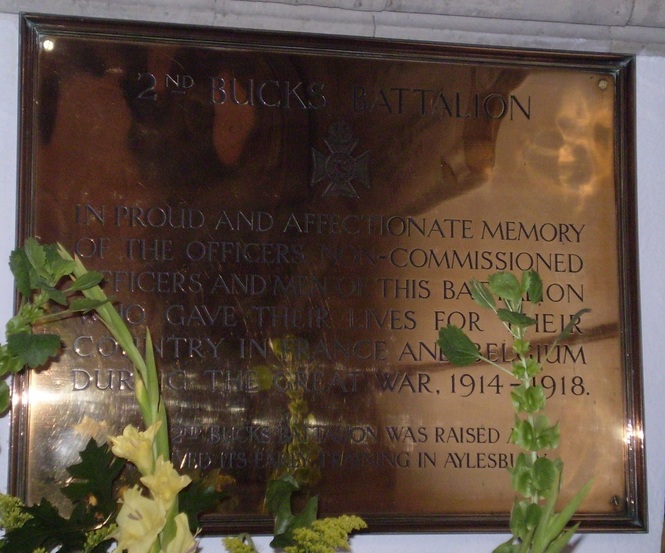
There is also a memorial to commemorate the men of the Wolverton Companies who did not return a tablet was obtained and engraved in their honour. It was originally displayed in the Wolverton Drill Hall but later joined the South African Tablet in the custody of the Wolverton Works Foreman’s Association, but is now displayed along with the South Africa tablet in Blakelands T A Centre:-
1920 with the re-formation of the Territorial Army the Buckinghamshire Battalion was reformed.
Between the wars a red cloth backing was added to the cap badge and badges of rank of KRRC type black on red were worn along with black “rifleman”belts.
Between the wars a red cloth backing was added to the cap badge and badges of rank of KRRC type black on red were worn along with black “rifleman”belts.
1939. In June 1939 with the threat of war looming the Buckinghamshire Battalion was once again split this time into 1st and 2nd Bucks Battalions. The 1st Bucks Battalion being formed from the companies at Aylesbury, Amersham and Wolverton and the 2nd Bucks Battalion being formed from those at Marlow, Slough and High Wycombe.
The Territorial Army was embodied on the 1st September 1939.
The Territorial Army was embodied on the 1st September 1939.
1940 The 1st Bucks Battalion still serving with 145 Infantry Brigade of the 48th Division Proceeded to France with the British Expeditionary Force (BEF) landing at Le Havre on the 18th January 1940.
On 10th May the Germans launched their Blitzkrieg, invading Holland and Belgium. On the 14th May the 1st Bucks along with 145 Brigade, 48th Division crossed into Belgium. On the 17th the battalion was ordered to withdraw during which it was severely hampered by sporadic artillery bombardment and dive-bomber attacks along with roads clogged with fleeing refugees. 48th Division’s role was to cover the withdrawal of the
other two divisions of I Corps (5th & 50th) who were detached for the defence of Vimy Ridge and Arras.
On the 24th May 145 Brigade were given the task of holding the town of Cassel, but on the way to Cassel the Brigade was also given the task of defending the important road and railway junction town of HAZEBROUCK.
As the Bucks were the rearguard unit it was easier to detach them and they were given the task.
HAZEBROUCK lay in the South West corner of the semi circle forming around DUNKIRK and was to be where the 1stBucks Battalion would make its last stand over two days of fighting against the German 8th Panzer Division.
Of those who fought at Hazebrouck only 10 officers and 200 men succeeded in getting back to England.
The Battalion received a rare compliment from the enemy themselves. In a German broadcast it was stated that: “the defenders of HAZEBROUCK not only delayed the advance, but resisted in a manner truly worthy of the highest traditions of the British Army”
On 10th May the Germans launched their Blitzkrieg, invading Holland and Belgium. On the 14th May the 1st Bucks along with 145 Brigade, 48th Division crossed into Belgium. On the 17th the battalion was ordered to withdraw during which it was severely hampered by sporadic artillery bombardment and dive-bomber attacks along with roads clogged with fleeing refugees. 48th Division’s role was to cover the withdrawal of the
other two divisions of I Corps (5th & 50th) who were detached for the defence of Vimy Ridge and Arras.
On the 24th May 145 Brigade were given the task of holding the town of Cassel, but on the way to Cassel the Brigade was also given the task of defending the important road and railway junction town of HAZEBROUCK.
As the Bucks were the rearguard unit it was easier to detach them and they were given the task.
HAZEBROUCK lay in the South West corner of the semi circle forming around DUNKIRK and was to be where the 1stBucks Battalion would make its last stand over two days of fighting against the German 8th Panzer Division.
Of those who fought at Hazebrouck only 10 officers and 200 men succeeded in getting back to England.
The Battalion received a rare compliment from the enemy themselves. In a German broadcast it was stated that: “the defenders of HAZEBROUCK not only delayed the advance, but resisted in a manner truly worthy of the highest traditions of the British Army”
The Battalion reformed at Hereford and trained mainly in the South West of England.
1942 In December 1942 the Battalion finally left 48th Division and was transferred to 54th Division in Suffolk where it took up defensive positions along the coast.
1943 the battalion was selected to form the nucleus of a “Beach Group”, this new formation was designed to land vehicles and stores across open beaches in the early stages of a seaborne landing.
In April 1943 the battalion moved to Scotland for training in this new role.
The Battalion eventually became part of 101 Beach Sub Area of No 6 Beach Group part of 3rd Infantry Division.
1944 The Battalion landed in Normandy on D-Day, June 6th 1944.
After fulfilling their Beach Group roles on SWORD Beach the Group was officially dissolved and on 30th July the 1st Bucks Battalion was put under the command of the 1st Canadian Army and 6th Airborne Division for operations serving alongside the 2nd battalion Oxfordshire and Buckinghamshire Light Infantry. In August the battalion was broken up to provide reinforcments with many of the battalion’s officers and men being posted to the 51st (Highland) Division.
Later on the battalion was again made up to strength and served in Brussels as line of communication troops.
1945 In February 1945 the Battalion was designated a “T” or Target Force Battalion designed to seize and hold targets of special importance such as radio transmitters, factories or secret weapons sites, this role the battalion carried out until the end of hostilities.
After VE day the Battalion was stationed at Menden, Germany.
The 2nd Bucks Battalion remained in the United Kingdom throughout the
war.
1946 In June 1946 The 1st Bucks Battalion was placed into “suspended animation” and finally disbanded on 7th August 1946.
1947. In March 1947 the Territorial Army was reformed and the 1st and 2nd Bucks Battalions were amalgamated, converted and transferred to the Royal Artillery as:
645 LIGHT ANTI AIRCRAFT REGIMENT, ROYAL ARTILLERY
Although retaining the Bucks Battalion Cap Badge and Black Buttons.
1955. In 1955 645 LAA Regiment RA became:
431 LIGHT ANTI AIRCRAFT REGIMENT, ROYAL ARTILLERY
1961. Finally in 1961 431 LAA Regiment was absorbed into:
299 FIELD REGIMENT, ROYAL ARTILLERY
On the disbandment of 431 LAA Regiment the “Bucks Battalion traditions” were handed onto the 4th Battalion, OXFORDSHIRE & BUCKINGHAMSHIRE LIGHT INFANTRY (TA) which had raised D company at High Wycombe in 1950, recruiting was later extended to Newport Pagnell and Slough.
1942 In December 1942 the Battalion finally left 48th Division and was transferred to 54th Division in Suffolk where it took up defensive positions along the coast.
1943 the battalion was selected to form the nucleus of a “Beach Group”, this new formation was designed to land vehicles and stores across open beaches in the early stages of a seaborne landing.
In April 1943 the battalion moved to Scotland for training in this new role.
The Battalion eventually became part of 101 Beach Sub Area of No 6 Beach Group part of 3rd Infantry Division.
1944 The Battalion landed in Normandy on D-Day, June 6th 1944.
After fulfilling their Beach Group roles on SWORD Beach the Group was officially dissolved and on 30th July the 1st Bucks Battalion was put under the command of the 1st Canadian Army and 6th Airborne Division for operations serving alongside the 2nd battalion Oxfordshire and Buckinghamshire Light Infantry. In August the battalion was broken up to provide reinforcments with many of the battalion’s officers and men being posted to the 51st (Highland) Division.
Later on the battalion was again made up to strength and served in Brussels as line of communication troops.
1945 In February 1945 the Battalion was designated a “T” or Target Force Battalion designed to seize and hold targets of special importance such as radio transmitters, factories or secret weapons sites, this role the battalion carried out until the end of hostilities.
After VE day the Battalion was stationed at Menden, Germany.
The 2nd Bucks Battalion remained in the United Kingdom throughout the
war.
1946 In June 1946 The 1st Bucks Battalion was placed into “suspended animation” and finally disbanded on 7th August 1946.
1947. In March 1947 the Territorial Army was reformed and the 1st and 2nd Bucks Battalions were amalgamated, converted and transferred to the Royal Artillery as:
645 LIGHT ANTI AIRCRAFT REGIMENT, ROYAL ARTILLERY
Although retaining the Bucks Battalion Cap Badge and Black Buttons.
1955. In 1955 645 LAA Regiment RA became:
431 LIGHT ANTI AIRCRAFT REGIMENT, ROYAL ARTILLERY
1961. Finally in 1961 431 LAA Regiment was absorbed into:
299 FIELD REGIMENT, ROYAL ARTILLERY
On the disbandment of 431 LAA Regiment the “Bucks Battalion traditions” were handed onto the 4th Battalion, OXFORDSHIRE & BUCKINGHAMSHIRE LIGHT INFANTRY (TA) which had raised D company at High Wycombe in 1950, recruiting was later extended to Newport Pagnell and Slough.
1967. On 1st April 1967 The Oxfordshire and Buckinghamshire Light Infantry (TA), became A Company,
The 4th (VOLUNTEER) BATTALION, THE ROYAL GREEN JACKETS (4RGJ)
The 4th (VOLUNTEER) BATTALION, THE ROYAL GREEN JACKETS (4RGJ)
1967. On 2nd April 1967 the 299 Field Regiment, Royal Artillery was replaced by a TAVR III formation -
THE BUCKINGHAMSHIRE REGIMENT RA (TA).
THE BUCKINGHAMSHIRE REGIMENT RA (TA).
1969. On 1st April 1969 The Buckinghamshire Regiment RA (TA) reduced to a cadre formation,
THE BUCKINGHAMSHIRE REGIMENT (TA) at Aylesbury under the
4th (Volunteer) Battalion, The Royal Green Jackets.
In December 1969 D Company 4RGJ was formed from the Buckinghamshire Regiment (TA)
1986. On 1st December 1986 the process was reversed when
The 5th (VOLUNTEER) BATTALION, THE ROYAL GREEN JACKETS (5RGJ)
was formed recruiting from Oxfordshire and Buckinghamshire.
1998. With the Strategic Defence Review of 1998 the 5th (V) Battalion, The Royal Green Jackets was disbanded with A (RGJ) and E (RGJ) companies forming part of a new “Home Counties Infantry Battalion”.
1999. On 1st July 1999 the unit was renamed as: -
THE ROYAL RIFLE VOLUNTEERS
2007. On the 1st February 2007 THE RIFLES were formed from a union of The Devonshire & Dorset Light Infantry, The Royal Gloucestershire, Berkshire & Wiltshire Light Infantry, The Light Infantry and The Royal Green Jackets.
The Royal Rifle Volunteers became the: 7th BATTALION, THE RIFLES.
THE BUCKINGHAMSHIRE REGIMENT (TA) at Aylesbury under the
4th (Volunteer) Battalion, The Royal Green Jackets.
In December 1969 D Company 4RGJ was formed from the Buckinghamshire Regiment (TA)
1986. On 1st December 1986 the process was reversed when
The 5th (VOLUNTEER) BATTALION, THE ROYAL GREEN JACKETS (5RGJ)
was formed recruiting from Oxfordshire and Buckinghamshire.
1998. With the Strategic Defence Review of 1998 the 5th (V) Battalion, The Royal Green Jackets was disbanded with A (RGJ) and E (RGJ) companies forming part of a new “Home Counties Infantry Battalion”.
1999. On 1st July 1999 the unit was renamed as: -
THE ROYAL RIFLE VOLUNTEERS
2007. On the 1st February 2007 THE RIFLES were formed from a union of The Devonshire & Dorset Light Infantry, The Royal Gloucestershire, Berkshire & Wiltshire Light Infantry, The Light Infantry and The Royal Green Jackets.
The Royal Rifle Volunteers became the: 7th BATTALION, THE RIFLES.
Proudly powered by Weebly
